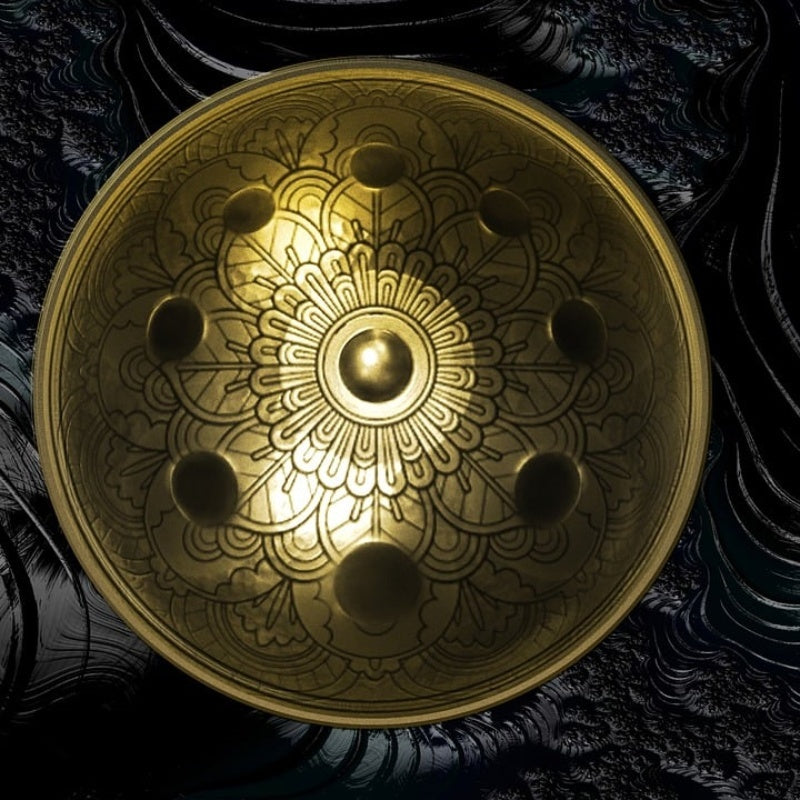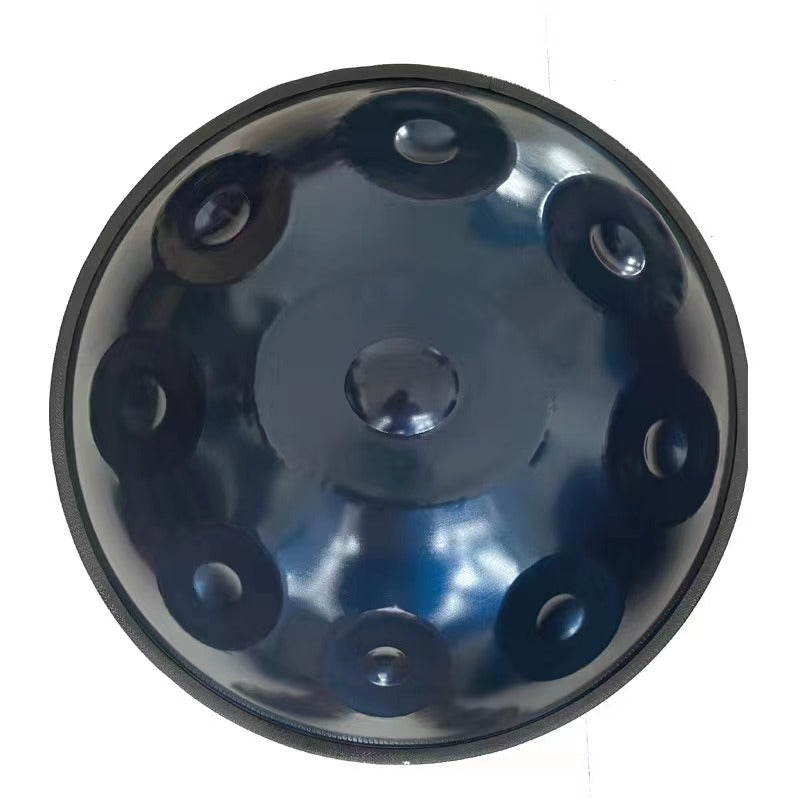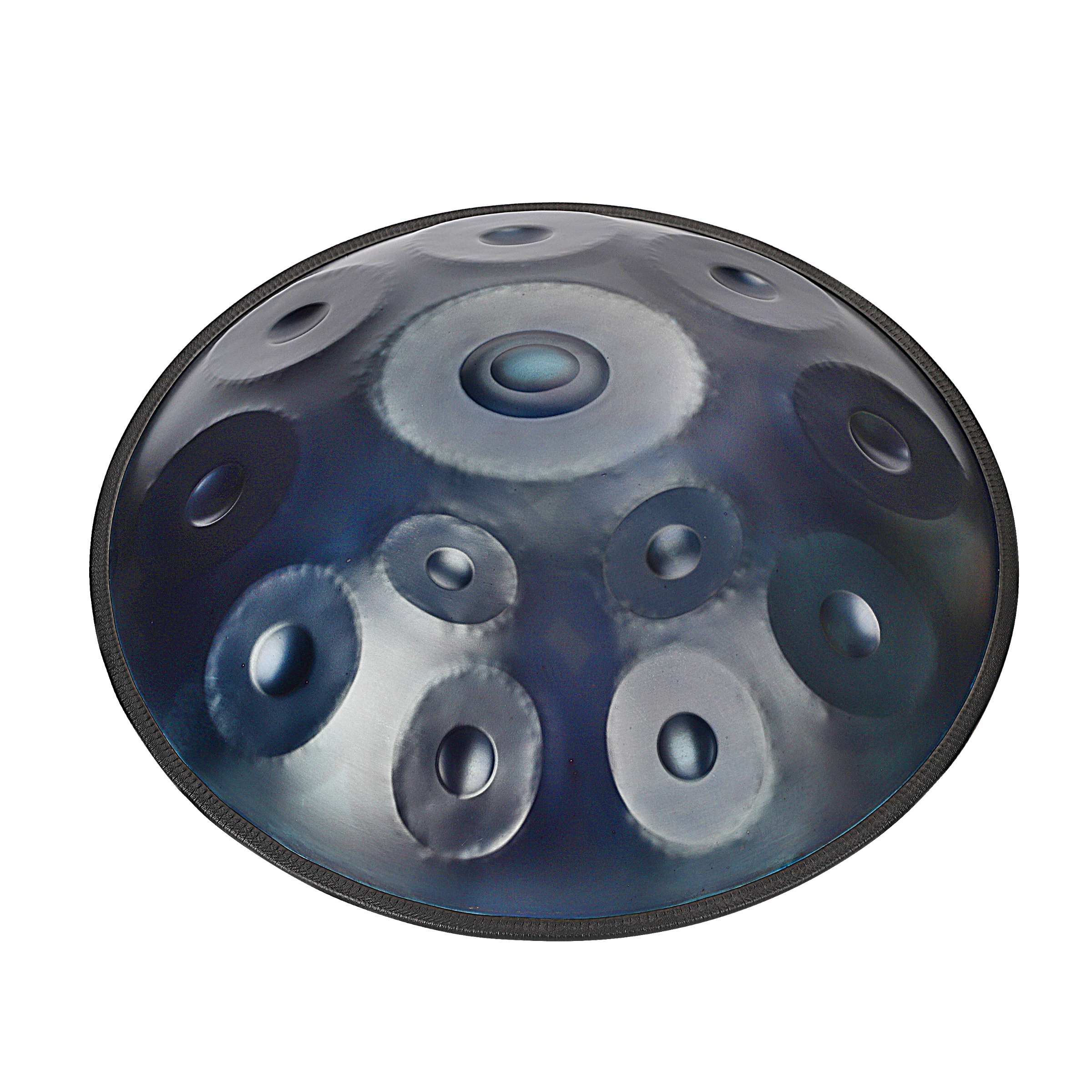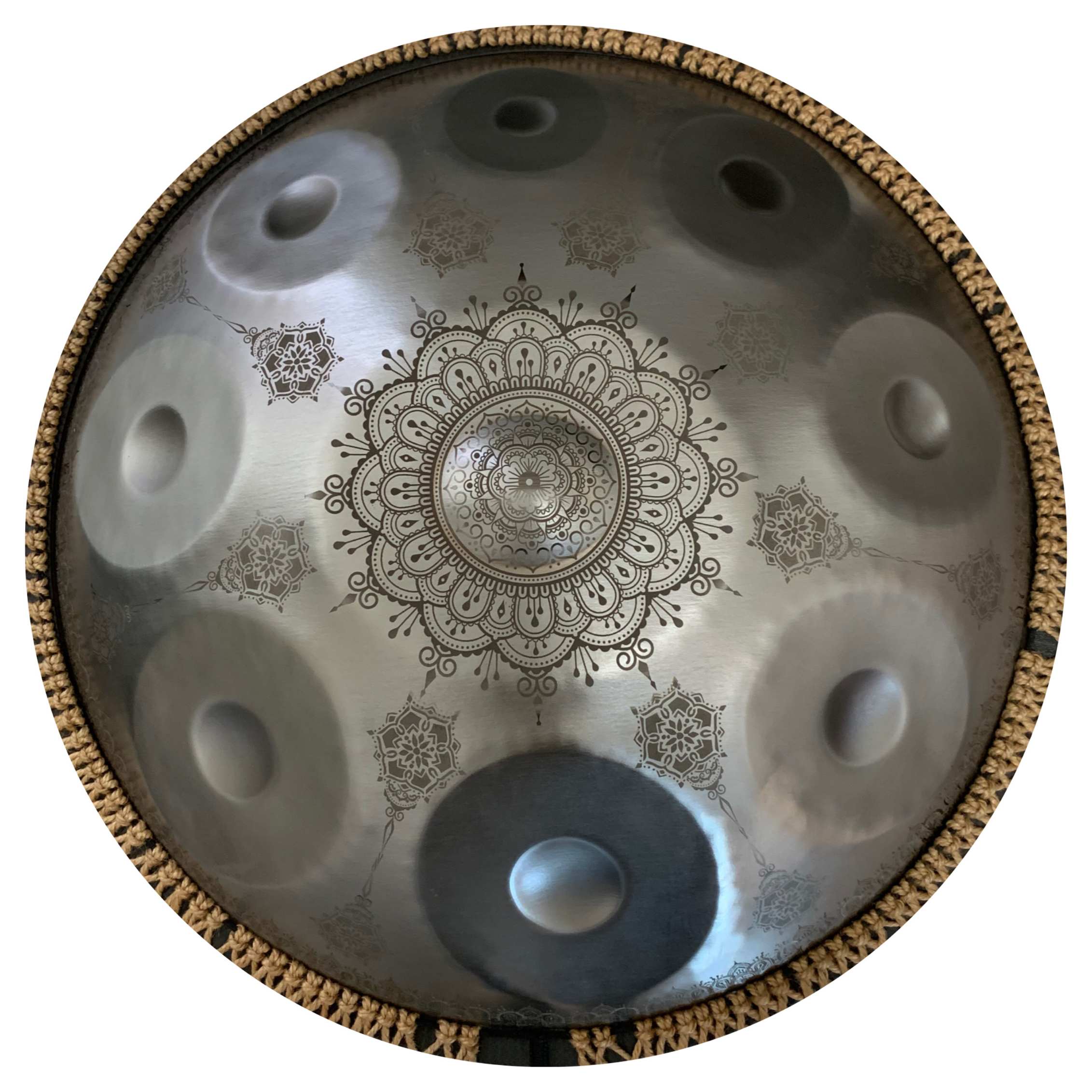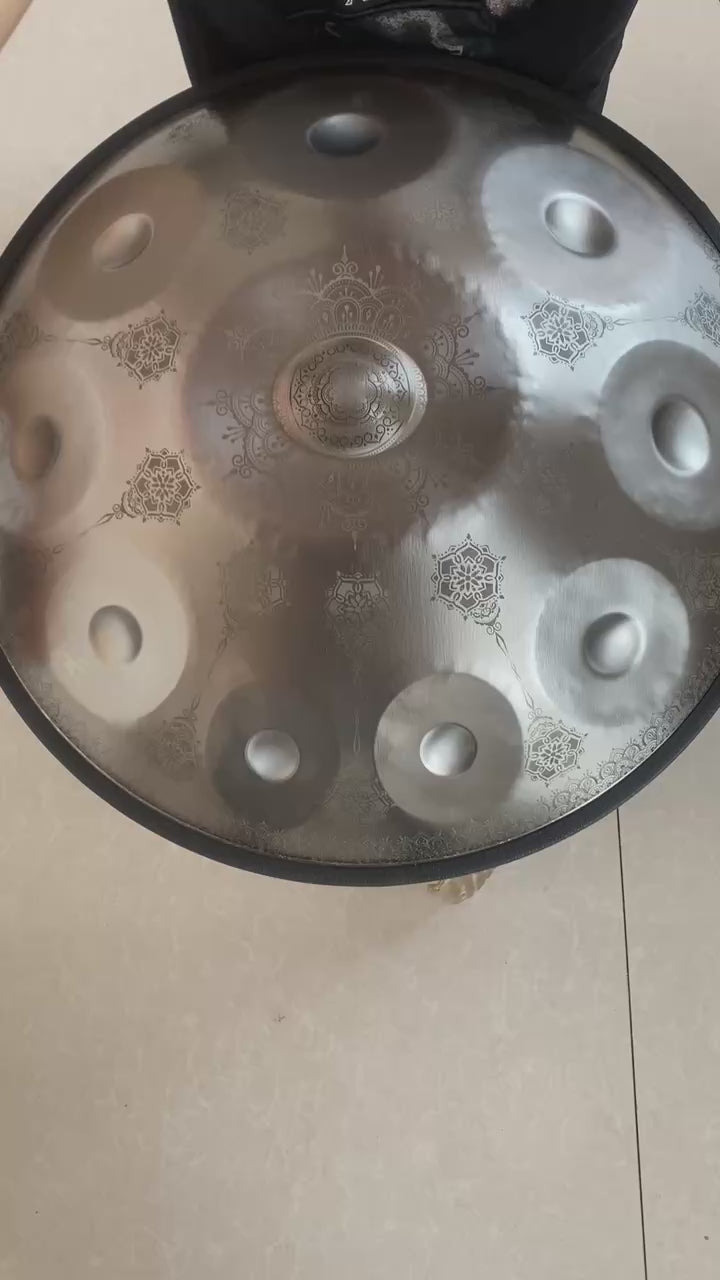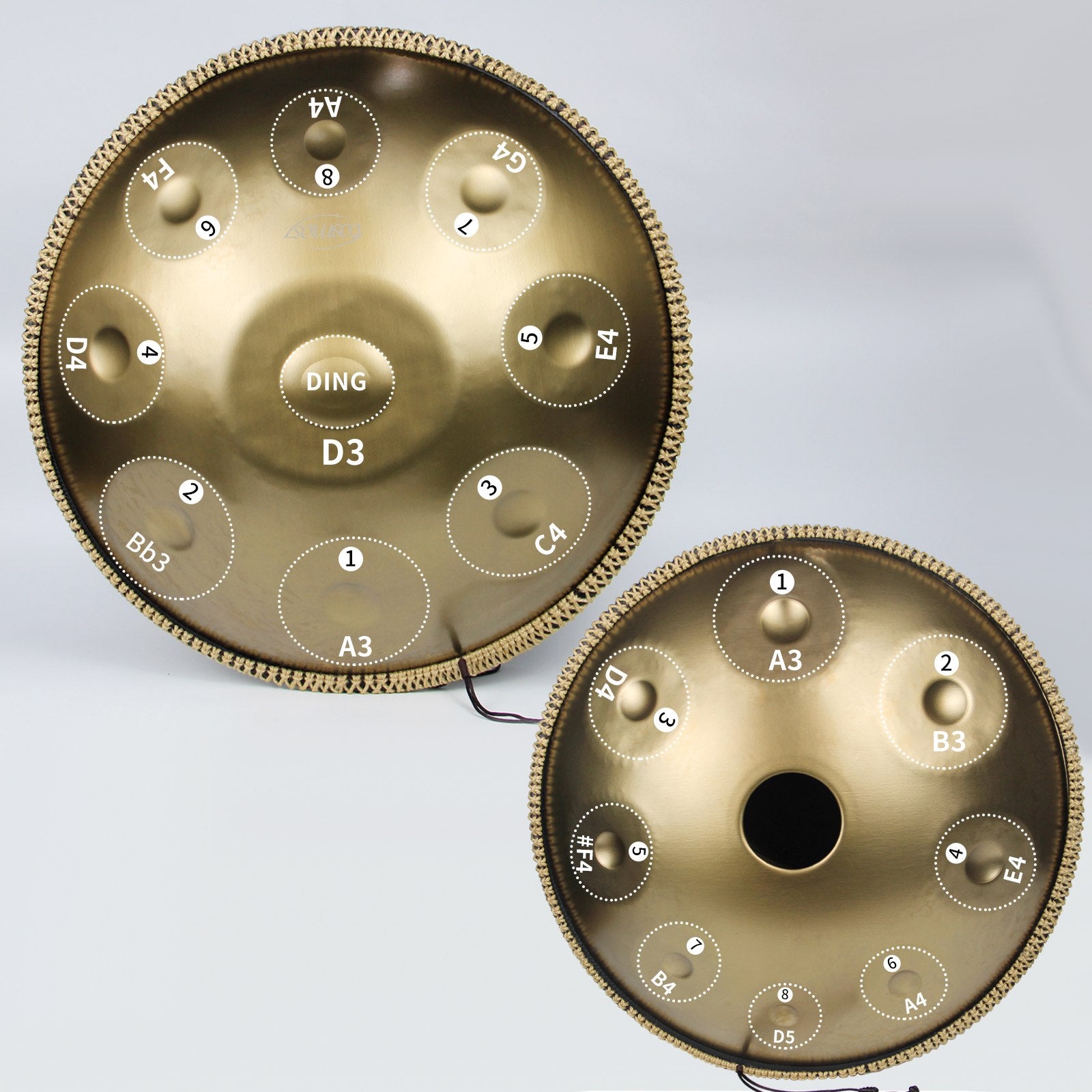
Es gibt niemanden, der nicht von dem bezaubernden Klang des Handpans beeinflusst wird. Es ist unmöglich, einen falschen Ton auf diesem Instrument zu erzeugen. Daher haben die meisten Menschen Spaß und drücken ihre Kreativität bereits ab den ersten Tönen aus. Darüber hinaus verbessert der Klang des Handpans tatsächlich unsere Gesundheit und unser Wohlbefinden.
Die Hang Drum ist eine Kombination aus dem indischen Ghatam und dem karibischen Steelpan. Sie wurde 2000 in der Schweiz von Felix Rohner und Sabrina Schärer entwickelt. Ihre charakteristischen Merkmale machen sie nützlich für therapeutische Zwecke. Handpan-Musik wird oft in Meditationssitzungen verwendet, um die Konzentration zu verbessern, die Entspannung zu vertiefen und eine friedliche Atmosphäre zu schaffen.
Wie wurde dieses einzigartige Instrument also bekannt für seine unglaublichen Gesundheits- und Therapie-Vorteile? Dieser Artikel untersucht die Vorteile der Verwendung von Handpans in der Therapie und wie es zur mentalen Gesundheit beiträgt.
Die einzigartigen therapeutischen Qualitäten des Handpans
Der resonante und angenehme Klang des Handpan-Durms macht ihn besonders geeignet für therapeutische Anwendungen. Da der Schwerpunkt auf der spontanen Musikgestaltung liegt, verwendet das Design des Instruments häufig pentatonische und ungewöhnliche Skalen. Dies eliminiert die Möglichkeit, einen falschen Ton zu spielen, und verringert die Bühnenangst. Daher wird das Lernen und Spielen dieses Instruments für diejenigen, die noch nie zuvor eines gespielt haben, viel einfacher.
Die Struktur des Handpans ermöglicht auch die Helmholtz-Resonanz: Die von dem Instrument erzeugten Klänge, die innerhalb der konvexen Form des Handpans erklingen, können eine Klangfülle bieten, die eine Umgebung in einen unglaublich beruhigenden Raum verwandelt. In der Klangtherapie, wo das ultimative Ziel darin besteht, Schallwellen für die physische und emotionale Erneuerung der Person zu nutzen, ist diese Resonanz entscheidend.
Vorteile der Verwendung von Handpans in der Therapie
Die Handpan-Trommel wird häufig in einem strukturierten therapeutischen Ansatz verwendet, um verschiedene Ziele während der Therapiesitzungen zu erreichen. Zu diesen Zielen gehören die Verbesserung der motorischen Fähigkeiten, die Steigerung des emotionalen Wohlbefindens und die Stärkung der kognitiven Fähigkeiten. Ihre Rolle in der Musiktherapie ist in mehreren wichtigen Bereichen besonders bedeutend, wie unten hervorgehoben.
Reduzierung von Stress und Angst
Die sanften, melodischen Klänge, die von der Hang Drum erzeugt werden, können den Menschen helfen, sich zu entspannen und übermäßige Muskelverspannungen sowie Stress und Angst abzubauen. Die harmonischen Töne des Instruments können Endorphine freisetzen, die natürlichen Stressreduktionschemikalien des Körpers, die den Blutdruck und die Herzfrequenz senken. Diese Hormone steigern die Aktivität der Blutgefäße, heben die Stimmung und unterstützen den Heilungsprozess.
Die tibetische Schale war Gegenstand mehrerer Untersuchungen. Lassen Sie uns Studien zu diesem Instrument betrachten, da es ähnliche Eigenschaften wie das Handpan aufweist. Eine Forschung einer Gruppe amerikanischer Ärzte und Akademiker wurde 2016 veröffentlicht. In dieser Studie nahmen 62 Teilnehmer im Alter von 21 bis 71 Jahren an Klangmeditationssitzungen mit tibetischen Schalen teil. Die Studie bestätigte, dass Klangmeditation die Emotionen der Entspannung steigert und das Gefühl von Anspannung verringert, indem sie äußerst signifikante Vorteile für die Teilnehmer nach der Klangtherapie aufzeigt.
Emotionale und psychologische Heilung
Für alle, die unter Depressionen, PTSD oder Angststörungen leiden, ist das Handpan Schlaginstrument ein hilfreiches Werkzeug. Da es beruhigende Klänge erzeugt, durch die man Emotionen freisetzen kann - nicht durch Worte, sondern durch Klänge - ist es sehr erfrischend und eine großartige Möglichkeit, Emotionen zu verarbeiten oder loszulassen. Soweit die von dem Instrument erzeugten Klänge beruhigend sind, ermutigen sie die Menschen, ihre blockierenden Emotionen preiszugeben, was mit Entspannung und Heilung danach einhergeht.
Entwicklung kognitiver und motorischer Fähigkeiten
Das Spielen des Hang-Instruments verbessert das Gedächtnis, die Konzentration und die Problemlösungsfähigkeiten des menschlichen Gehirns. Darüber hinaus verbessert das Üben die Hand-Augen-Koordination sowie die Koordination von Händen und Fingern. Dies ist besonders vorteilhaft für Lernende und für Personen, die neurologische Eingriffe hatten.
Gemeinschaft und soziale Interaktion
Die globale Gruppenmusiktherapie hilft Menschen, ihre sozialen Interaktionen mit dem Hang Pan Instrument zu verbessern. Dieser Ansatz ermutigt alle Teilnehmer, inklusiv zu sein und sich an konstruktiven Aktivitäten zu beteiligen, die ausgewogene Klänge erzeugen, um Beziehungen sowie Gefühle von Unterstützung und Akzeptanz mit anderen zu stärken.
Tiefe Entspannung, Meditation und Achtsamkeit
Das Handpan erzeugt unglaublich beruhigende Musik, deren Vibrationen den Zuhörer zu umhüllen scheinen und ihn direkt in die Gegenwart ziehen. Diese Resonanz ist sehr vorteilhaft, um sanfte Umgebungen zu schaffen, die Sie durch Stressabbau, Kontrolle des Nervensystems und klareres Denken führen können.
Umgang mit Schmerzen
Zahlreiche Studien zeigen, dass musikalische Stimulation Schlaganfallpatienten hilft, schneller zu gehen, während gleichzeitig ihre Kadenz, Länge und Symmetrie verbessert werden.
Die beruhigenden Klänge des Handpan beruhigen jegliche Schmerzen, die im Körper und Geist der Person pochen. Studien zeigen, dass tatsächlich sehr wenige Patienten bereit waren, Medikamente wie Morphin oder Entzündungshemmer nach dem Spielen oder Hören eines Handpan-Durms einzunehmen. Dieser Effekt wurde bei Osteoarthritis, Migräne und Rückenschmerzen sowie bei anderen Erkrankungen beobachtet.
Gesunder Schlaf
Ein beruhigendes oder entspannendes Geräusch kann Ihnen helfen, leichter einzuschlafen und Schlaflosigkeit zu verhindern, indem es die Qualität Ihres Schlafes verbessert. Darüber hinaus gibt es weniger nächtliche Wachphasen, was verhindert, dass Sie morgens erschöpft aufwachen. Die gute Nachricht ist, dass diese Eigenschaft in allen Altersgruppen festgestellt wurde, und die Forschung hat diese Phänomene seit mehreren Jahrzehnten bestätigt. Daher ist es eine großartige Idee, das Handpan ein paar Minuten vor dem Schlafengehen zu spielen, um einen erholsamen Schlaf zu gewährleisten.
Echte Anwendungen des Handpan in Therapie und Bildung
Verschiedene Beispiele für das Handpan-Drum in realen Umgebungen zeigen die verschiedenen vorteilhaften Anwendungen des Instruments in der Musiktherapie. Oliver Jacobson, ein Musiktherapeut am UCSF Benioff Children's Hospital, nutzte beispielsweise das Hang-Drum, um Kindern, die zur Behandlung aufgenommen wurden, zu helfen, sich weniger gestresst und angespannt zu fühlen. Menschen mit erworbenen Hirnverletzungen verwenden insbesondere das Hang-Instrument in sozialen Umgebungen wie Selbsthilfegruppen. Es ermöglicht ihnen, sich zu entspannen und sogar mit anderen Patienten zu sozialisieren, und am wichtigsten ist, dass es sie glücklich und stolz macht, dieses spezielle Musikstück geschaffen zu haben.
In Bezug auf die Bildung wird das Handpan-Pandrum in Vorschulen und Grundschulen eingesetzt, um die Lernergebnisse zu verbessern und Resilienzprobleme bei den Kindern anzugehen. Es steigert das Selbstwertgefühl der Kinder, und sie werden inspiriert, zusammenzuarbeiten und ihre Fantasie mit dem ansprechenden und beruhigenden Klang dieses Instruments zu nutzen, der leicht zu erlernen ist.
Abschluss
Dieser Artikel zeigt, wie das Hang-Instrument in der Therapie eingesetzt werden kann und welche vielen Vorteile es bietet.
Es ist ein kraftvolles Werkzeug in der Musiktherapie, das eine Vielzahl von Vorteilen bietet. Seine beruhigenden Klänge können helfen, Stress abzubauen, emotionale Wunden zu heilen, die Konzentration zu verbessern und soziale Verbindungen zu stärken. Mit dem zunehmenden Interesse an alternativen Therapien wird es zunehmend zu einem vielseitigen therapeutischen Instrument in den meisten Gesundheitseinrichtungen, das Gesundheitsprobleme durch Musik und Klang anspricht.
Das Handpan ist einfach zu bedienen, intuitiv und äußerst anpassungsfähig, was es perfekt für jeden macht – sogar für diejenigen ohne musikalische Erfahrung. Seine entspannenden und beruhigenden Töne können Raum für Entspannung und Heilung bieten, ohne dass man ein ganzes Lied spielen muss; jede Note hat ihre therapeutischen Wirkungen.

